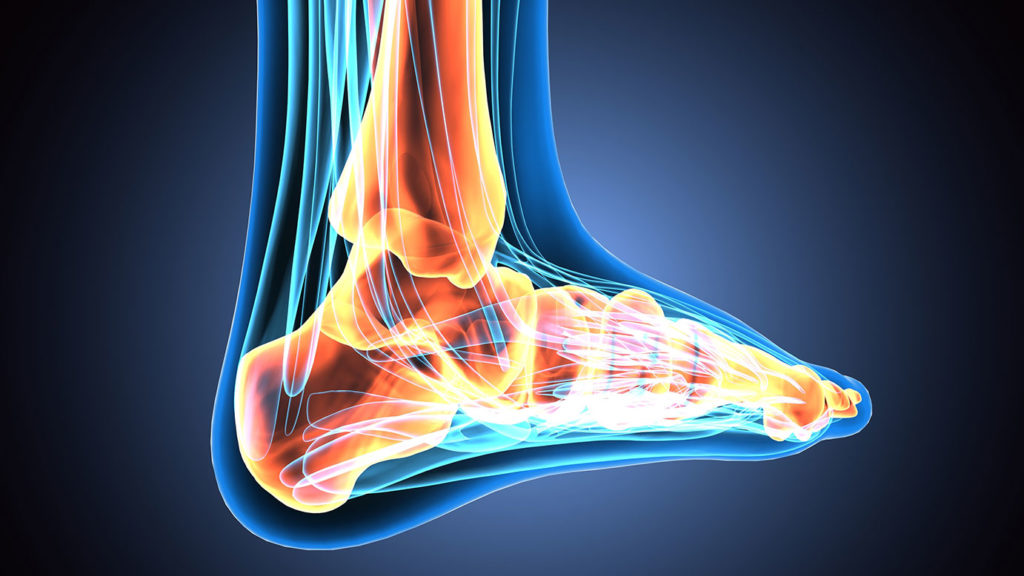
Chronic Foot Pain – A Symptom of Vascular Disease
If you have foot pain, wounds, swelling, or persistently cold feet, pay attention to what your feet are telling you. There could be a deeper issue going on that could impact your lifelong health.
Although about 11% of U.S. adults suffer from chronic pain, few talk to their doctors about it. Sometimes, people have a tendency to dismiss foot pain and figure it’s just part of growing older.
However, you could have diabetic feet, nerve pain in your foot, unseen foot sores, a heel spur, or even a life-threatening condition like peripheral artery disease (PAD). Without a diagnosis from a vascular specialist, it will be difficult to know the source of your discomfort.
What Does Foot Pain Feel Like?
Foot pain comes in many forms. It can occur anywhere in the foot, ankle, or toes. Sometimes it’s localized to the big toe and other times it extends all the way up to the hip. Arch and heel pain are very common and can be quite intense.
The sensation of the pain also varies by person and depends on the underlying source of the problem. It can range from a dull aching at night to an intense stabbing sensation that makes it hard to walk more than a few steps.
You might notice that your foot pain increases or decreases depending on your activities: running, doing housework, bending, sitting, or laying down flat. Some people experience relief from foot pain by elevating their legs; others find the pain just as bad or worse in this position.
These are some of the most commonly reported sensations of foot pain:
- Dull, aching pain along the arch or side of the foot
- Numbness or tingling in the feet and toes
- A burning pain that comes and goes
- Throbbing sensations, especially after exercise
- Cramps in the calves and feet
- Intense, stabbing heel pain
Common Causes of Foot Pain
Muscle cramps are a common cause of foot pain and often happen when the foot and leg are repeatedly flexing. You may even be able to feel a lump within your foot as your foot muscles tighten in a particular spot.
Don’t be too quick to dismiss cramped and painful foot muscles as just a result of fatigue or dehydration. There could be other causes at work, like a medication you’re taking or an underlying health problem.
Did you know foot pain can arise from more than 40 diagnosable conditions? While the most frequent causes are injury and overuse, foot pain is also associated with:
- Diabetic foot problems
- Nerve pain in the feet
- Achilles tendonitis
- Ingrown toenails
- Bursitis
- Osteoarthritis
- Deep vein thrombosis (DVT)
- Peripheral artery disease
- Gout
- Infection
- Rheumatoid arthritis
- Varicose veins
- Thrombophlebitis (leg blood clot)
- Spinal stenosis
- Flat feet
- Bone spurs
- Hammertoe
- Plantar fasciitis
Common Factors That Worsen Foot Pain
Foot pain can grow much worse over time if left untreated. You might also be unintentionally making your foot condition worse by doing one or more of the following things:
- Smoking or drinking alcohol excessively
- Not getting enough moderate exercise
- Wearing high heels
- Doing foot-impact activities like martial arts
- Not controlling your blood pressure or cholesterol
- Having undiagnosed diabetes
- Sitting for long periods of time
- Walking barefoot on hard surfaces
- Wearing shoes that rub or constrict the feet
As anyone with foot pain knows, it can be quite distracting and even completely debilitating. You may have to rest your feet for long periods simply to get through your daily life.
Self Care: Ice, Rest, Arch/Shoe supports, Strengthening exercises
Medication: Anti-Inflammatories, Prescription medication
Procedure: Physical therapy, In-office therapy, Foot surgery
It’s important to note that the type of treatment must be carefully matched to your foot condition. For example, it can be helpful to soak tired feet in a warm water bath. However, this is not a recommended treatment for diabetic feet with open sores because it could introduce infection. Instead, you’d need special diabetic wound care.
When to See a Vascular Specialist
Even mild foot pain can be cause for concern. If you have persistent pain, cramping, swelling, tenderness, an open wound, changes in foot skin color, or a temperature above 100 degrees, see a doctor who specializes in foot and leg pain as soon as possible.
At Maryland Vascular Specialists, we understand the frustration of foot pain. To settle your mind about diabetic foot problems, nerve pain in your foot, foot sores, heel pain, and more, schedule a consultation with a vascular specialist.